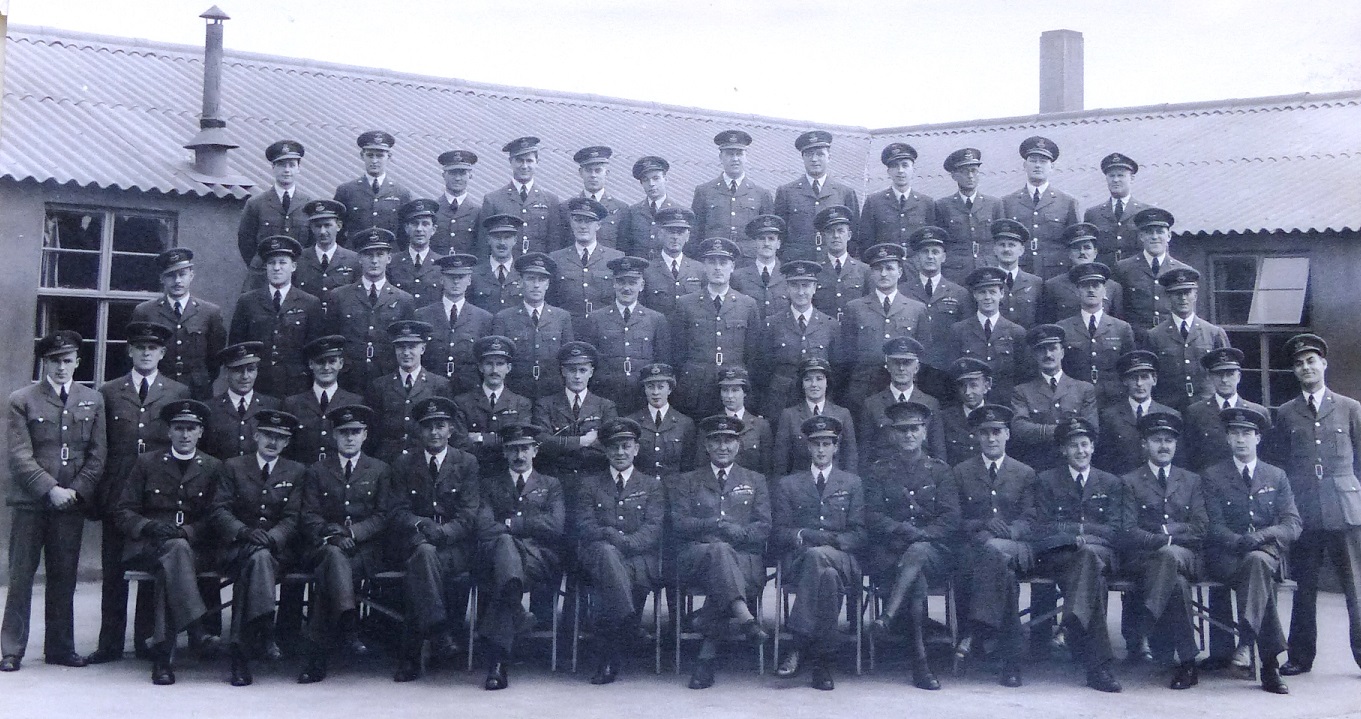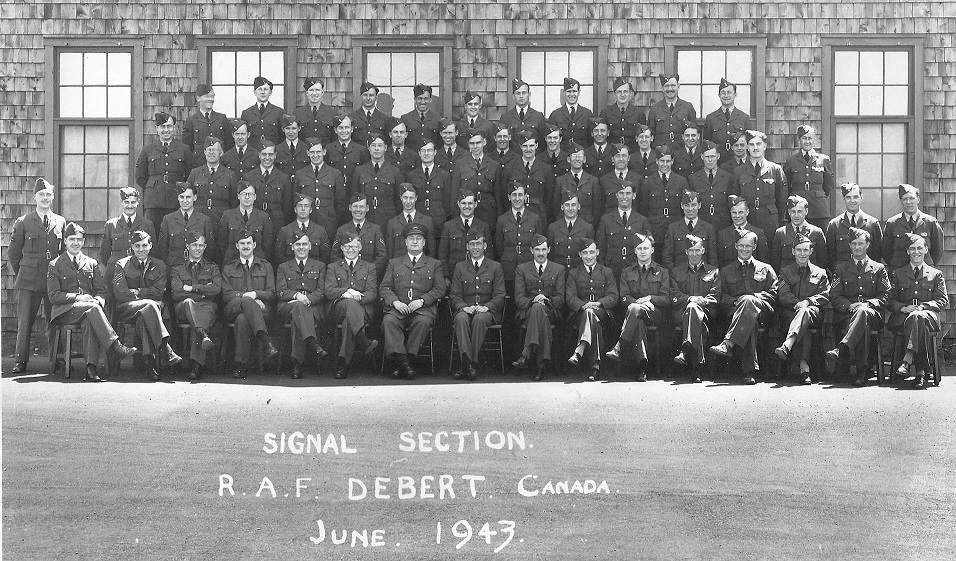Air of Authority - A History of RAF Organisation
No 24 Operational Training Unit
Originally planned to form on 15 October 1941,
formation was delayed and it eventually formed at Honeybourne on 15 March 1942 as a 2/3 status unit within
Officers Commanding: -
15 Mar 1941 Gp Capt E D Barnes
20 Apr 1943 Gp Capt A C P Carver
28 Mar 1944 Gp Capt G V Lane
Codes used: -
| FB | Mar 1942 - Jul 1945 |
| TY | |
|
UF |
xxx |
No 25 Operational Training Unit
Officers Commanding: -
1 Mar 1941 Gp Capt J C Foden
18-30 Dec 1941 Wg Cdr P Slocombe (Temp)
30 Dec 1941 Gp Capt J N Boothman
10 Jun 1941 Gp Capt R G Harman
19 Jan 1943 Sqn Ldr R C van der Ben
Codes used: -
| PP | Mar 1941 - Feb 1943 |
| ZP | xxx 1942 - |
No 26 Operational Training Unit
This was planned as a
Blenheim training unit at Cranfield and was
due to form in April 1941, but formation was cancelled. Personnel for the
unit began arriving at Wing in November and it eventually f
O
Officers Commanding:
15 Jan 1942 Sqn Ldr A W G Martin
17 Jan 1942 Gp Capt S M Park
1 Jan 1943 Gp Capt J Bradbury (until 12 Feb 1944)
1 Mar 1944 Gp Capt R M Coad
21 Mar 1945 Gp Capt R A R Mangles
14 Jun 1945 Gp Capt R M Coad
21 Jan 1946 Gp Capt D D'A A Greig
Codes used: -
| EU | Jan 1942 - xxx 1944 |
| PB | Dec 1941 - |
|
WG |
Jan 1942 - Mar |
No 27 Operational Training Unit
This was formed in
In view of the number
of RAAF personnel being training at the unit, in June 1943 command was placed
under a RAAF officer. Control passed to
Officers Commanding:
23 Apr 1941 Flt Lt R S Blackman
13 May 1941 Gp Capt O R Gayford
12 Sep 1941 Gp Capt L M E Jarman
24 Jun 1942 Gp Capt C E Horrex (until 16 Jun 1943)
17 Jun 1943 Gp Capt P G Heffernan RAAF (injured in collision of X3924 and LN295 on 6 Nov 1943)
9 Nov 1943 Gp Capt E Burton (injured in a car accident 17 Dec 1944)
17 Dec 1944 Wg Cdr A W Doubleday RAAF (Temp OC- CI)
1 Jan 1945 Gp Capt H I Dabinett
xx xxx 1945 Wg Cdr ?
Codes used: -
| BB | Apr 1941 - Jun 1945 |
| EN | |
|
UJ |
|
| YL | xxx |
 |
|
Personnel of No 27 OTU, Lichfield - July 1941 |
No 28 Operational Training Unit
The personnel for
this unit began arriving at Wymeswold on 14 April 1942 with the arrival of the
Station Defence Personnel followed two days later by Engineering, Equipment and
Catering personnel under the command of the Senior Engineer Officer. With
the arrival of the Station Admin Officer the station officially opened under his
command. Officially formed in
No 92 Group on 16 May 1942, it was to be equipped with Wellington ICs to train night bomber crews
but the following month
was transferred to
In June 1943 it moved its base of operations temporarily to Ossington, whilst airfield lighting was installed and in June 1944 to Bircotes whilst runways were laid at Wymeswold by which time it was operating Wellington IIIs and Xs. It also used a wide variety of other types for support activities including Ansons, Defiants, Martinets , Oxfords and Tiger Moths. As the need for bomber crews diminished, the unit disbanded on 15 October 1944, with the stations being transferred to No 44 Group, Transport Command.
Officers Commanding: -
30 Apr 1942 Sqn Ldr J Blackmore
1 Jun 1942 Wg Cdr J R Bell
Codes
used: -
| LB | May 1942 - Oct 1944 |
| QN | May 1942 - Oct 1944 |
| WY | May 1942 - Oct 1944 |
No 29 Operational Training Unit
In November 1944 Bitteswell was transferred to No 44 Group, Transport Command with 'A' flight being transferred to Little Horwood as part of No 26 OTU, thereby reducing it to ¾ OTU, which it remained until it disbanded on 22 June 1945.
Officers Commanding: -
xx Apr 1941 Gp Capt R T Taafe
20 Aug 1943 Gp Capt R D Stubbs
Codes used: -
| NT | Apr 1942 - May 1945 |
| TF | Dec 1942 - May |
No 30 Operational Training Unit
Formed in
As the need for bomber crews diminished,
Seighford was transferred to Flying Training Command resulting in the unit being reduced to three-quarter strength in October 1944.
On 25 January 1945 it began relocating to Gamston, a process which was completed
on 2 February and at the same time was transferred
to
Officers Commanding: -
28 Jun 1942 Gp Capt H McC White (took over command of RAF Hixon on 8 Jun 1942)
15 May 1944 Gp Capt R A C Barclay
2 Feb 1945 Gp Capt F F Rainsford
Codes used: -
| BT | May 1942 - Feb1945 |
| KD | May 1942 - Feb 1945 |
| TN | May 1942 - Feb 1945 |
No 31 Operational Training Unit
Planned as No 80 OTU it was formed at Debert in Canada on 23 May 1941 as a Hudson equipped General Reconnaissance training unit. It also undertook anti-submarine patrols from Dartmouth over the Western Atlantic. In May 1944 it began to receive Mosquitoes and its role changed to that of training strike crews, but on 1 July 1944 it was disbanded by being redesignated No 7 OTU, RCAF.
 |
|
Group photo of the Signals Section, No 31 OTU, RAF Debart in June 1943 Photo courtesy - R Murphy (hid father was serving on the unit at the time) |
Codes used: -
| LR | May 1942 - Oct 1942 |
No 32 Operational Training Unit
Formed as a General Reconnaissance training unit at West Kirkby on 20 July 1941, it embarked for Canada on 21 July and arrived at Patricia Bay in British Columbia on 9 August. The following month it received Ansons with Beauforts being received in October and following the Japanese attack on Pearl Harbour, it adopted an operational role, carrying out patrols along the West coast of Canada. However, it was soon clear that the Japanese were not planning to attack that far north and the unit reverted to a training role. In May 1942 the Beauforts were replaced by Hampdens and from December 1943 it began to receive Dakotas and Expeditors. On 21 February 1944 the Hampdens were transferred to the RCAF and the unit began training transport crews, moving to Comox on 26 May, being redesignated No 6 OTU RCAF on 1 June.
Officers Commanding: -
xx Sep 1941 Gp Capt P D Robertson
Codes used: -
| DK |
|
| OP |
|
| RD |
|
|
|
|
|
|
|
|
|
|
No 34 Operational Training Unit
Formed at Yarmouth, Nova Scotia on 17 April 1942 when its personnel arrived from Britain, it took up residence at Pennfield Ridge as an Anson equipped General Reconnaissance training unit. in May with Venturas beginning to supplement the Ansons in June. Hudsons were also used from August 1943 but the unit disbanded on 19 May 1944.
Officers Commanding: -
27 May 1942 Gp Capt A C Evans-Evans
Codes used: -
| FY | Jun 1942 - Oct 1942 |
No 35 Operational Training Unit
This was to be formed in Canada as a bomber OTU but formation was not proceeded with.
No 36 Operational Training Unit
Leaving England on 24 February 1942, it arrived at Greenwood, Nova Scotia, where it began training General Reconnaissance crews from 9 March using Ansons and Hudsons. In April 1943 its role was changed when it received Mosquitoes and these continued in use until it was disbanded by being redesignated No 8 OTU, RCAF on 30 June 1944.
Codes used: -
| EF | May 1942 - Oct 1942 |
No 38 Operational Training Unit
This was to be formed in Canada as a bomber OTU but formation was not proceeded with.
This page was last updated on 17/03/25©
![]() Main Menu
Main Menu
![]()